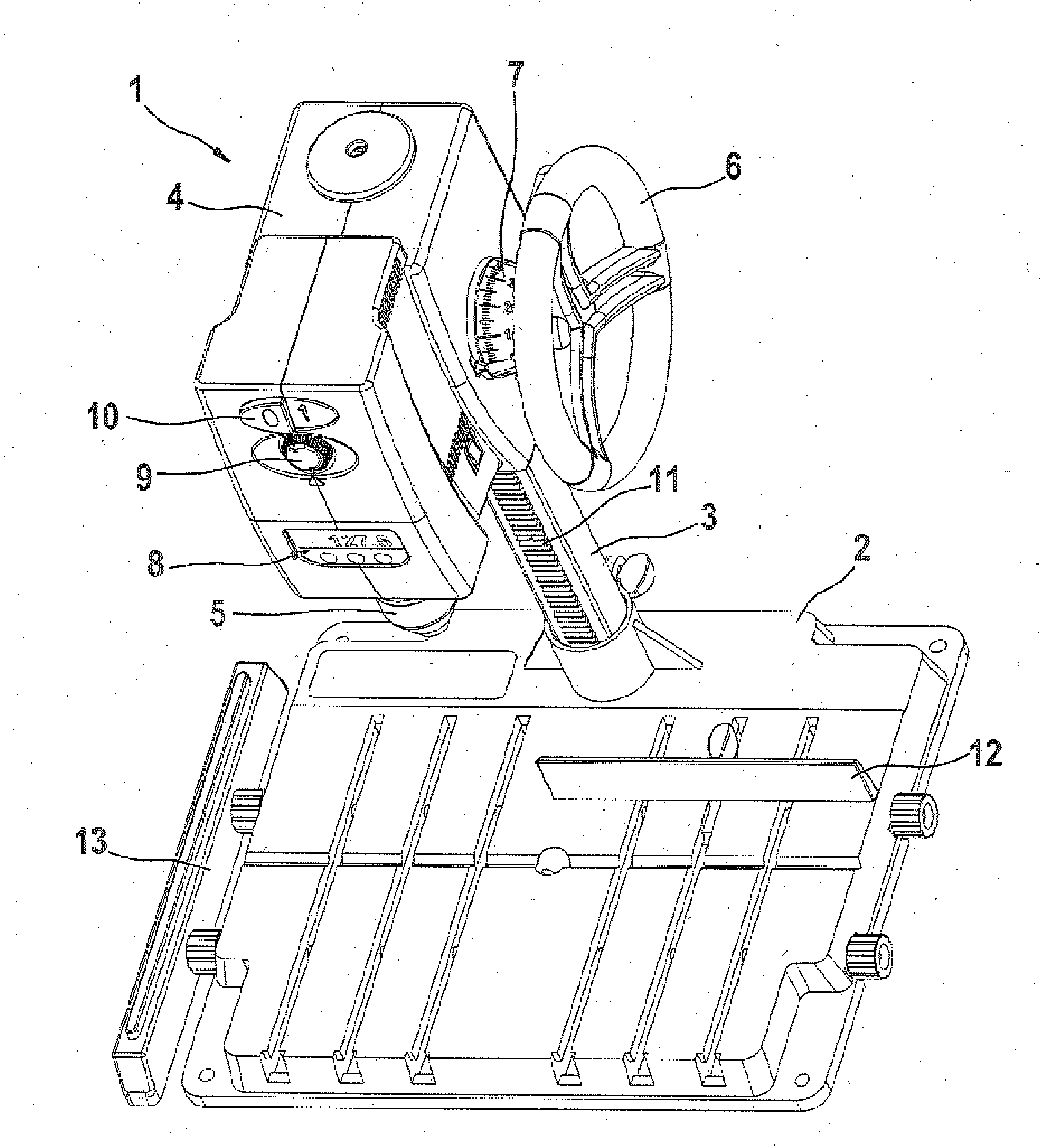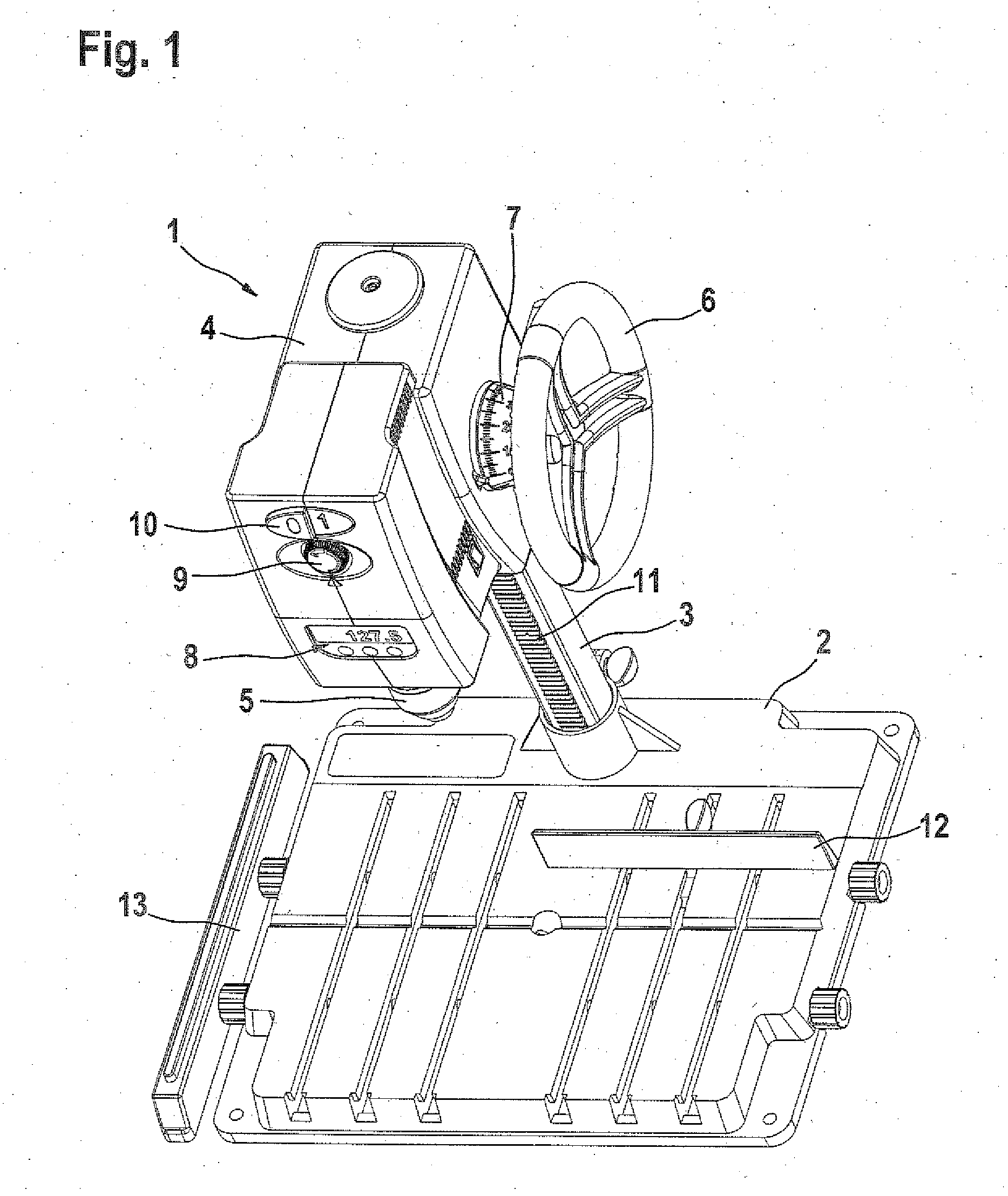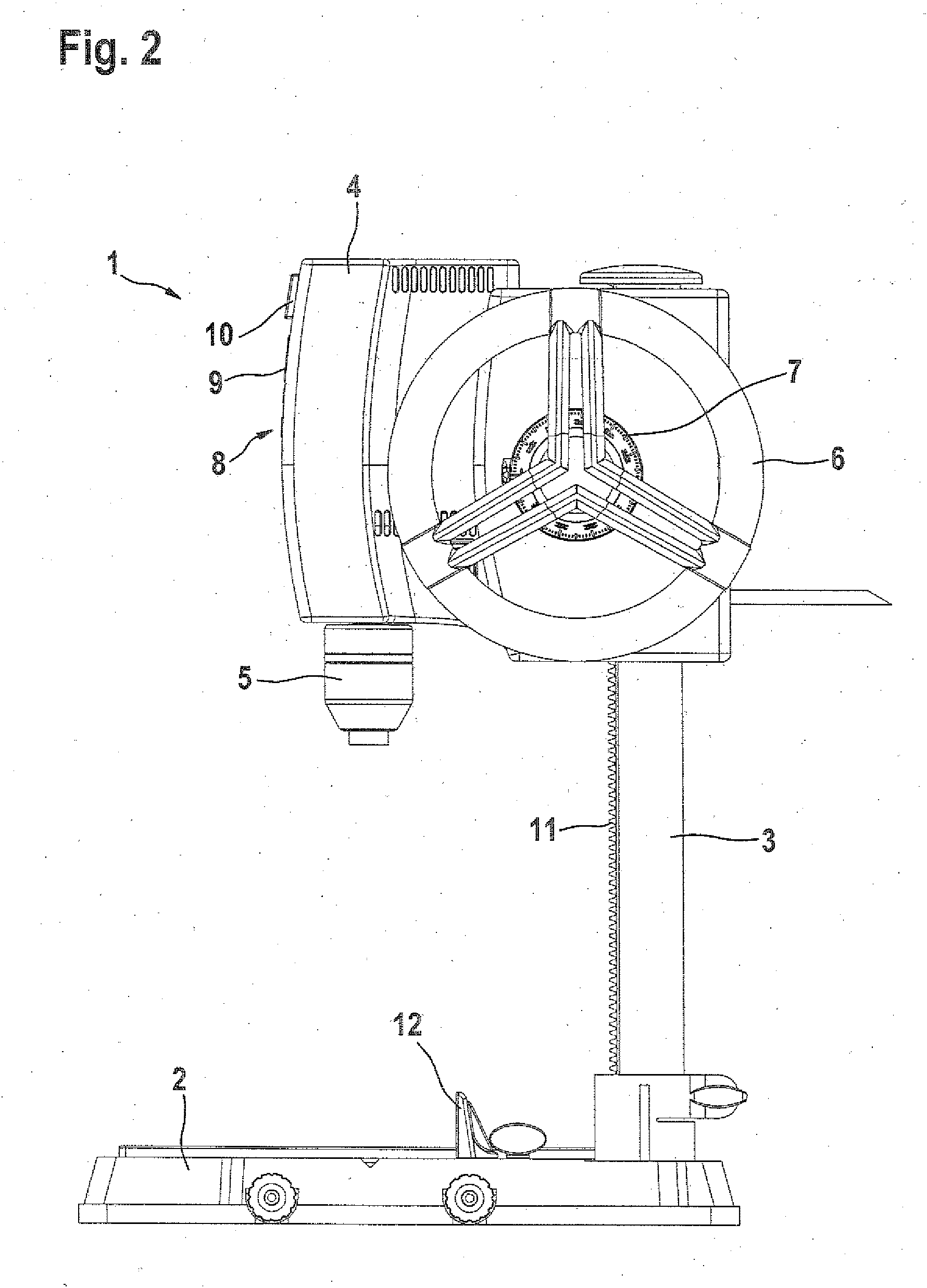Stationary power drill
- Summary
- Abstract
- Description
- Claims
- Application Information
AI Technical Summary
Benefits of technology
Problems solved by technology
Method used
Image
Examples
Embodiment Construction
[0019]The stationary power drill 1 shown in FIGS. 1 through 3 includes a base 2, embodied as a base plate, on which a vertical guide column 3 is disposed that is the carrier of a tool housing 4 with a drill unit 5 received in the housing. The tool housing 4 is embodied as manually adjustable vertically and has a handwheel 6 that is to be actuated by the drill operator and upon the rotation of which the tool housing 4 is adjustable vertically along the guide column 3. On the handwheel 6, there is a ring scale 7 for reading out the currently set height of the tool housing.
[0020]In the front region of the tool housing 4, there is a display panel 8, embodied for instance as an LCD and on which various parameters can be displayed, such as the rpm of the drill unit 5 and the absolute position in terms of height of the tool housing. The rpm of the drill unit is meant to be set via an rpm adjuster 9 also disposed in the front region of the tool housing 4. An on / off actuation switch 10 for t...
PUM
 Login to View More
Login to View More Abstract
Description
Claims
Application Information
 Login to View More
Login to View More - R&D
- Intellectual Property
- Life Sciences
- Materials
- Tech Scout
- Unparalleled Data Quality
- Higher Quality Content
- 60% Fewer Hallucinations
Browse by: Latest US Patents, China's latest patents, Technical Efficacy Thesaurus, Application Domain, Technology Topic, Popular Technical Reports.
© 2025 PatSnap. All rights reserved.Legal|Privacy policy|Modern Slavery Act Transparency Statement|Sitemap|About US| Contact US: help@patsnap.com



